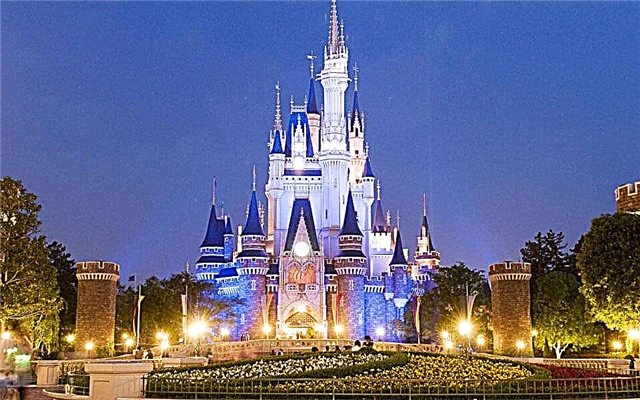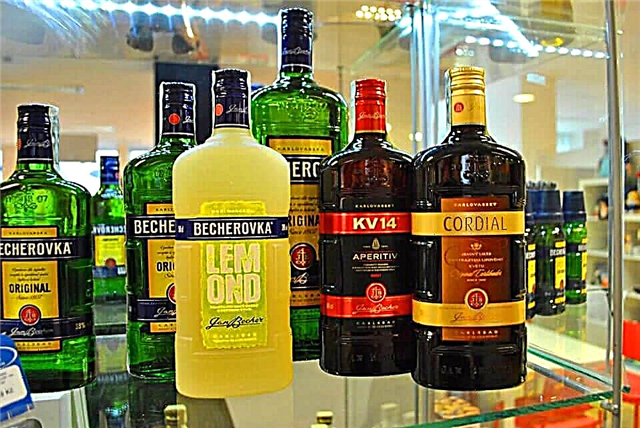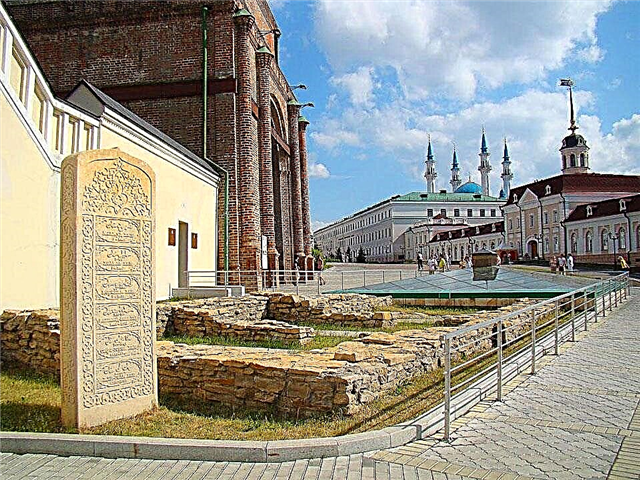In all corners of our planet there are so many mysterious places associated with the ancient past that ethnographers and archaeologists do not get bored. Expeditions, excavations, searches for precious information collected bit by bit - such is the painstaking work of those who "revive" the past. Written documents describing events related to ancient monuments become truly invaluable for them. Similar historical chronicles tell about King Kasyap, whose name is associated with the ruins of the ancient fortress of Sigiriya, located in the Matale district of Sri Lanka.
Fortress history
Sigiriya means "lion rock" and is one of the most beautiful mountainous places in Sri Lanka. On the rock are the famous artifacts in the form of the remains of an ancient palace fortress, built in the 5th century BC.

Rock caves have served as a monastery since prehistoric times. This place was not chosen by the king for his residence by chance: the inaccessible high cliffs served as a reliable refuge for Kasyapa, who feared revenge from his brother Mogallana for the death of his father, in which he was guilty.
According to the chronicles, Kasyapa, seized with the desire to sit on the royal throne, killed Dhatusen's father in an unprecedented cruel way, immured alive in a wall. Mogallana, who was to inherit the throne, was forced into hiding in India, where he gathered an army to overthrow the illegal ruler.

Assuming that his brother would take revenge on him for the murder of his father and the seizure of the throne, Kasyapa built an impregnable fortress on the rock with luxurious palaces, surrounding them with artificial gardens. During this time, Mogallana gathered a powerful army, brought it to Sri Lanka and declared war on his brother. Even such a reliable fortress did not save the life of the impostor king: his army turned out to be weaker not only physically, but also morally. The warriors were reluctant to defend their father's assassin king, and they deserted from the battlefield, leaving him unprotected. According to one of the legends, even the war elephant of Kasyapi betrayed the king, sharply turning back and escaping from the battlefield. After that, the illegitimate king fell on the edge of his sword and ignominiously said goodbye to life.

There is another version, according to which the Sigiriya fortress was built by Dhatusen, and the son completed the construction in memory of his father and used the palace for entertainment, since he was a great lover of entertainment. It is no longer possible to establish exactly whose merit was greater in the creation of the fortress complex, but it is certain that this historical and cultural monument has been taken under the protection of UNESCO. And the bad fame about King Kasyap presented various options for his death: suicide, poisoning ...

The fortress he built was again used as a monastery, where the monks atoned for the sins of the power-hungry parricide. Now these picturesque ruins, covered with ancient legends, are a place of pilgrimage for numerous tourists who gather here to immerse themselves in contemplation of inexplicably wonderful views of nature, against which the remains of a once majestic palace surrounded by a fortress rise.
Sigiriya complex as an architectural monument
Here you can see the remains of the Upper Palace, located on the upper plane of the cliff, among which the middle terrace with the striking Lion's Gate, which is the remains of the entrance walls with steps between them, along the edges of which massive lion paws are carved from stone, is quite well preserved. Looking at them, it is difficult to imagine that this is the creation of the hands of stonecutters who carved out a real work of art.

The magnificent frescoes with five hundred images of graceful female figures preserved on the Mirror Wall, which is made of a material similar to porcelain and polished to a mirror shine, make a strong impression. From the frescoes, one can draw a conclusion about the everyday and cultural traditions of the ancient Sri Lankans, about the artistic level of the crafts of that era, despite the fact that many of them have already been erased by time. Art critics recognize the style of fresco painting as unique, which consists in applying paints (the brightness of which has not faded) with long strokes, drawing lines that create a sense of three-dimensional images. The drawings can be seen in different parts of the rock, for example, in a cave called "Cobra Hood".

The Lower Palace was a grandiose structure surrounded by stone and water gardens, canals and fountains. Even the remnants of structures testify to the extraordinary splendor and luxury in which the royal people drowned.
Sigiriya water gardens
They are divided according to the generally accepted scheme in the central part of the fortress territory. The first of them is an islet in the water, connected to neighboring land plots by 4 embankments. The second consists of 2 long pools, arranged on both sides of the path. The water was supplied to the pools by two canals, next to which there are fountains that feed on water from underground sources. After the rains, some of them operate, to the delight of tourists.

Here, on two large islands, small summer palaces were built. The third stone garden was located a little higher and was an octagonal pool, to which waterways led. The entire system of water gardens, worthy of the highest praise and admiration, was connected to each other by an underground aqueduct, connected to an external moat, which originated from a huge artificial lake. It was a single complex organism created by brilliant designers to match Archimedes and Leonardo da Vinci.
Stone gardens
This is a collection of large boulders of various shapes, between which narrow paths wind. They occupy the space at the foot of the cliff from the northern slopes to the southern ones. It was here, on top of one of the boulders, that the Royal Audience Hall was located, reminiscent of the remains of the five-meter royal throne, carved out of granite.

The ascent to Sigiriya is not only a fascinating, but also a rather difficult two-hour journey along endless steep stairs, mountain bends of paths, along a suspension bridge. Each trail has its own name, one part is called the Elephant Road; the other leading to the palace is the Lion's Road, and the path through the stone garden is the Cobra's Road, because one of the stones resembles this snake.
Those who climb to the very top of the cliff are rewarded for the difficult climb with such a magically fabulous view of nature paintings opening below that everyone ceases to feel tired and only feels happiness from being in this amazing place.
Did the article inspire you to travel? Be sure to check out our travel guide to Sri Lanka.











